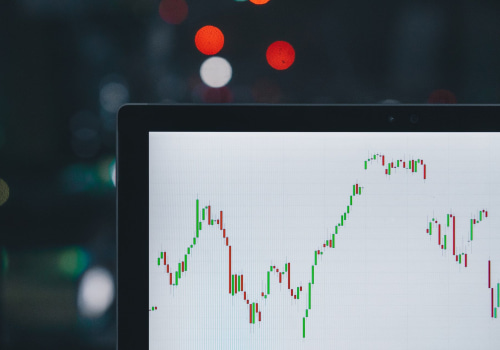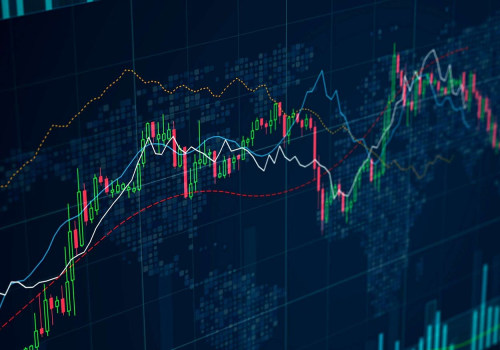Are you looking to make a smart investment and take advantage of the potential for high returns on binary options? If so, you need to understand the different types of binary options available. Binary options are a type of financial instrument that allow traders to speculate on future market movements without having to own the underlying asset. By trading binary options, investors can make large profits from small investments in a short period of time. In this article, we'll explore the different types of binary options and how to make the most of them.
With our tips and advice, you can be sure to make informed decisions about which type of binary option is best suited for your needs.
Binary options
are a form of financial trading that offer a fixed return on investment for predicting the correct outcome of an asset's price. In this article, we'll explore the different types of binary options available, as well as the pros and cons of each one. The most common types of binary options are the cash-or-nothing binary option and the asset-or-nothing binary option. The cash-or-nothing binary option pays a fixed amount of cash if the option expires in-the-money while the asset-or-nothing pays the value of the underlying security. Other types of binary options include one-touch, no-touch, and double one-touch or double no-touch binary options. A cash-or-nothing binary option is the most common type of binary option.This type of option pays out a fixed amount of cash if the option expires in-the-money (i.e., if the underlying asset's price is above or below the strike price depending on the type of option chosen). For example, if an investor buys a call option with a strike price of $50 and the underlying asset's price is above $50 at expiration, then he or she will receive a fixed payout. On the other hand, if the underlying asset's price is below $50 at expiration, then he or she will not receive anything. An asset-or-nothing binary option pays out the value of the underlying security if the option expires in-the-money. For example, if an investor buys a call option with a strike price of $50 and the underlying asset's price is above $50 at expiration, then he or she will receive the value of the underlying asset.
On the other hand, if the underlying asset's price is below $50 at expiration, then he or she will not receive anything. A one-touch binary option pays out a fixed amount of cash if the underlying asset's price touches a predetermined level at any time prior to expiration. For example, if an investor buys a call option with a strike price of $50 and the underlying asset's price touches $50 at any time before expiration, then he or she will receive a fixed payout. On the other hand, if the underlying asset's price never reaches $50 before expiration, then he or she will not receive anything. A no-touch binary option pays out a fixed amount of cash if the underlying asset's price never touches a predetermined level prior to expiration. For example, if an investor buys a call option with a strike price of $50 and the underlying asset's price never reaches $50 before expiration, then he or she will receive a fixed payout.
On the other hand, if the underlying asset's price reaches $50 before expiration, then he or she will not receive anything. A double one-touch binary option pays out a fixed amount of cash if the underlying asset's price touches two predetermined levels at any time prior to expiration. For example, if an investor buys a call option with two strike prices of $50 and $55 and the underlying asset's price touches both levels before expiration, then he or she will receive a fixed payout. On the other hand, if the underlying asset's price never reaches either level before expiration, then he or she will not receive anything. A double no-touch binary option pays out a fixed amount of cash if the underlying asset's price never touches two predetermined levels prior to expiration. For example, if an investor buys a call option with two strike prices of $50 and $55 and the underlying asset's price never reaches either level before expiration, then he or she will receive a fixed payout.
On the other hand, if the underlying asset's price reaches either level before expiration, then he or she will not receive anything. Each type of binary option has its own advantages and disadvantages. For example, cash-or-nothing binary options are typically easier to understand and use than asset-or-nothing binary options because they only require traders to predict whether an underlying asset's price will go up or down by a certain time. On the other hand, asset-or-nothing binary options may be more suitable for traders who are looking for greater control over their investments because they allow traders to take advantage of fluctuations in an underlying asset's price without having to predict whether it will go up or down by a certain time. Using these different types of binary options in real world trading scenarios can help traders create profitable trading strategies. For example, traders may buy one-touch binary options when they expect that an underlying asset's price will reach a certain level within a certain period of time but don't want to predict whether it will go up or down by that time.
Traders may also use double one-touch and double no-touch binary options when they expect that an underlying asset's price will reach two different levels within a certain period of time but don't want to predict which direction it will move in between those two levels. However, it is important to note that there are risks associated with all types of binary options trading. For example, one-touch and no-touch binary options may have higher payouts than traditional binary options but also involve greater risk due to their all-or-nothing nature. Additionally, double one-touch and double no-touch binary options may have higher payouts but involve even greater risk due to their all-or-nothing nature as well as their requirement for predicting multiple levels in an underlying asset's price. In addition to understanding each type of binary option and its associated risks, traders should also have knowledge about market conditions and be familiar with technical analysis tools such as charts and indicators in order to successfully execute trades using any type of binary option.
Range Options
Range options, also known as boundary options, are a type of binary option that requires the underlying asset’s price to remain within two predetermined price levels, or within a range, for the trade to be successful. If the price moves outside of this predetermined range before the option expires, then it results in a loss. Range options can be used to trade a variety of assets, such as commodities, stocks, and currency pairs.For example, if a trader believes gold prices will remain within a certain range over the course of a month, they could purchase a range option that would pay out if gold prices stay between two predetermined prices during that time period. If gold prices move outside of that range at any point during the month, then the option would expire worthless. Range options are typically used when the market is expected to remain stagnant or move within a certain range. This allows traders to take advantage of these conditions without having to predict the exact price movements of an asset. Range options can also be used to hedge other investments and provide additional income.
High/Low Options
High/low binary options are one of the most popular types of binary options trading.As the name implies, high/low options involve predicting whether an asset’s price will increase or decrease over a given period of time. If the prediction is correct, the investor will receive a predetermined payout. High/low options offer traders the opportunity to speculate on the short-term movements of an asset’s price. Traders can use these options to speculate on stocks, indices, commodities and even currencies.
For example, a trader may believe that the price of Gold will increase over the next hour. If the trader is correct, he will receive a predetermined payout. Conversely, if the trader believes that the price of Gold will decrease, he can place a low option and still receive a payout if the prediction is correct. High/low options can also be used to hedge against other positions. For example, if a trader holds a long position in an asset, he may use a high/low option to protect against any potential losses.
By using this strategy, the trader can limit his downside risk while still having the potential to make a profit. High/low options offer traders the ability to take advantage of short-term market movements and potentially make a profit. However, they also come with some risks. Since these options are based on predicting the direction of an asset’s price, they can be difficult to predict accurately and traders should always exercise caution when trading with them.
Touch Options
Touch options are a type of binary options contract that is available in some markets. With this type of option, the trader predicts whether the price of the underlying asset will 'touch' a predetermined level during the life of the contract.If the price does touch the level, then the trader receives a predetermined payout. If it does not touch the level, then the trader loses their investment. The most common type of touch option is the 'one touch' option. This is where the trader predicts whether the underlying asset will reach or exceed a predetermined level before the contract expires. The payout for a one-touch option is generally higher than other types of binary options, as it is more difficult to predict whether the price will reach the predetermined level.
Other types of touch options include 'no-touch' options, where the trader predicts that the price of the underlying asset will not reach a certain level, and 'double-touch' options, where two different levels are set and the trader predicts if either of them will be 'touched'.For example, if a trader believes that the price of an asset will reach a certain level during a certain period, they could buy a one-touch option to take advantage of this prediction. If the price does reach or exceed the predetermined level before expiry, then the trader will receive their payout. If it does not reach or exceed this level, then they will lose their investment. The potential profits from trading with touch options can be much higher than with other types of binary options contracts. However, this also means that there is an increased risk associated with these trades.
As with any type of trading, it is important to understand the risks involved and have a good understanding of how the markets work before investing any money. In conclusion, there are a variety of binary options available to traders, each with their own advantages and disadvantages. High/Low options provide a simple way for traders to take a position on the direction of an asset's price, Range options allow traders to set boundaries for a price range, and Touch options allow traders to predict the level at which an asset's price will reach. Traders should choose an option type based on their individual needs, goals, and risk tolerance.






